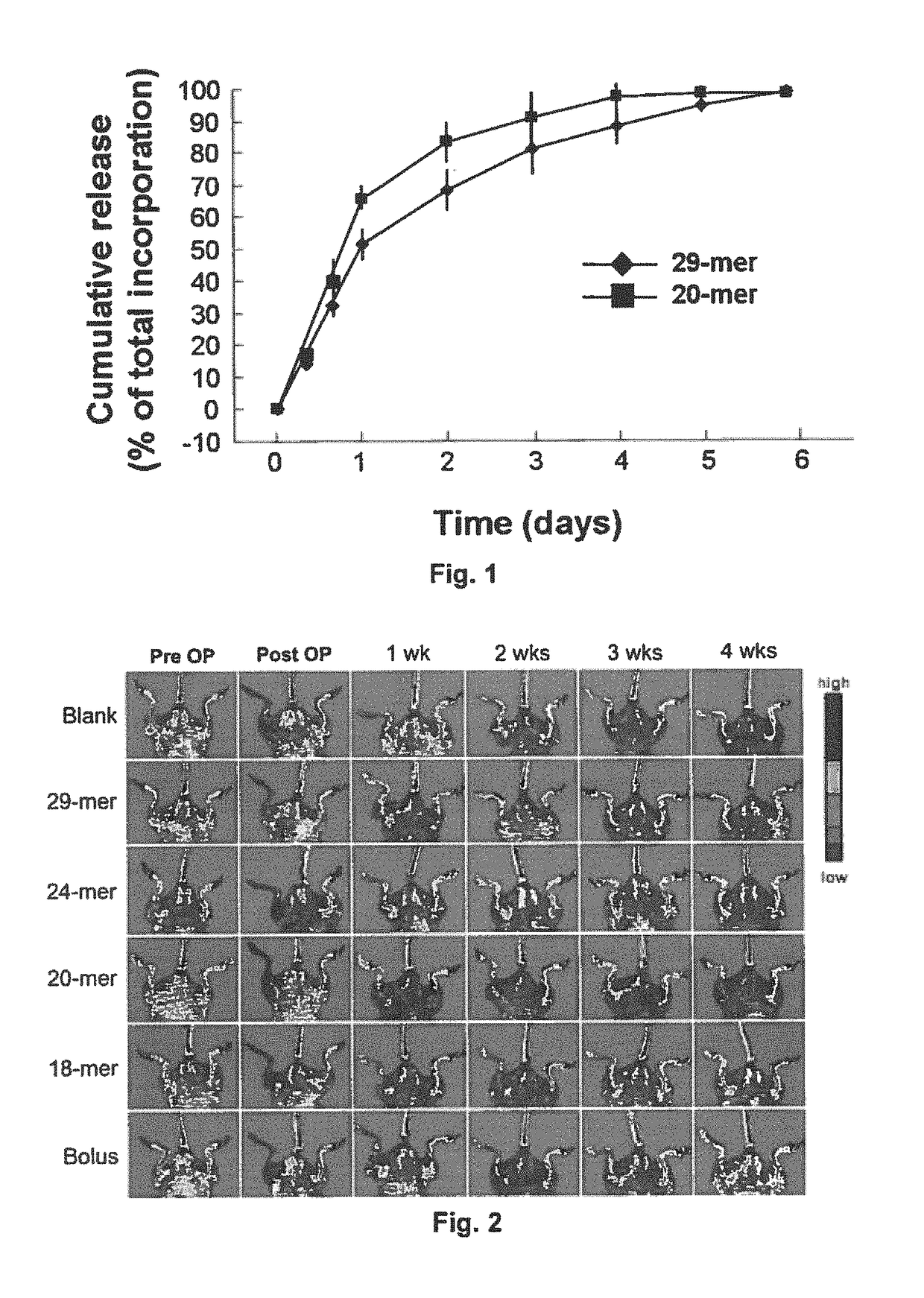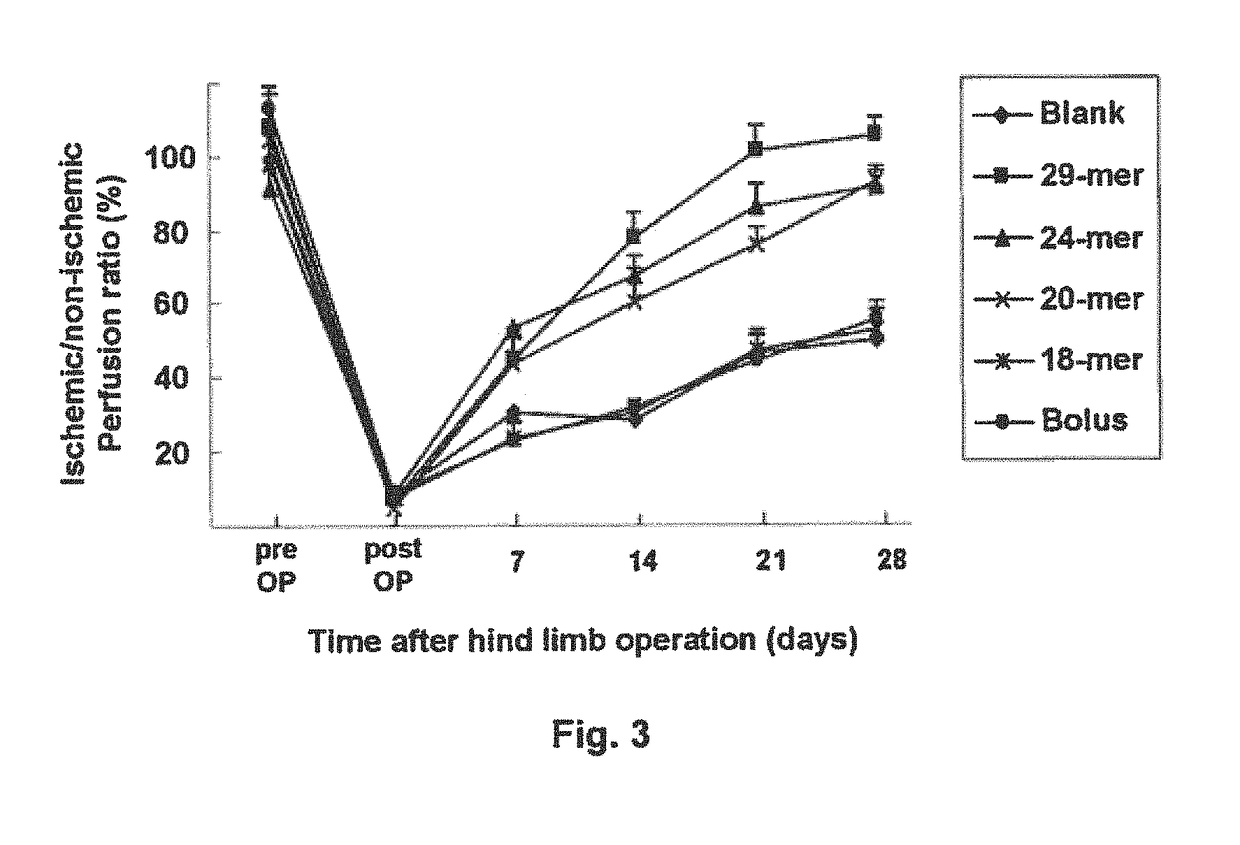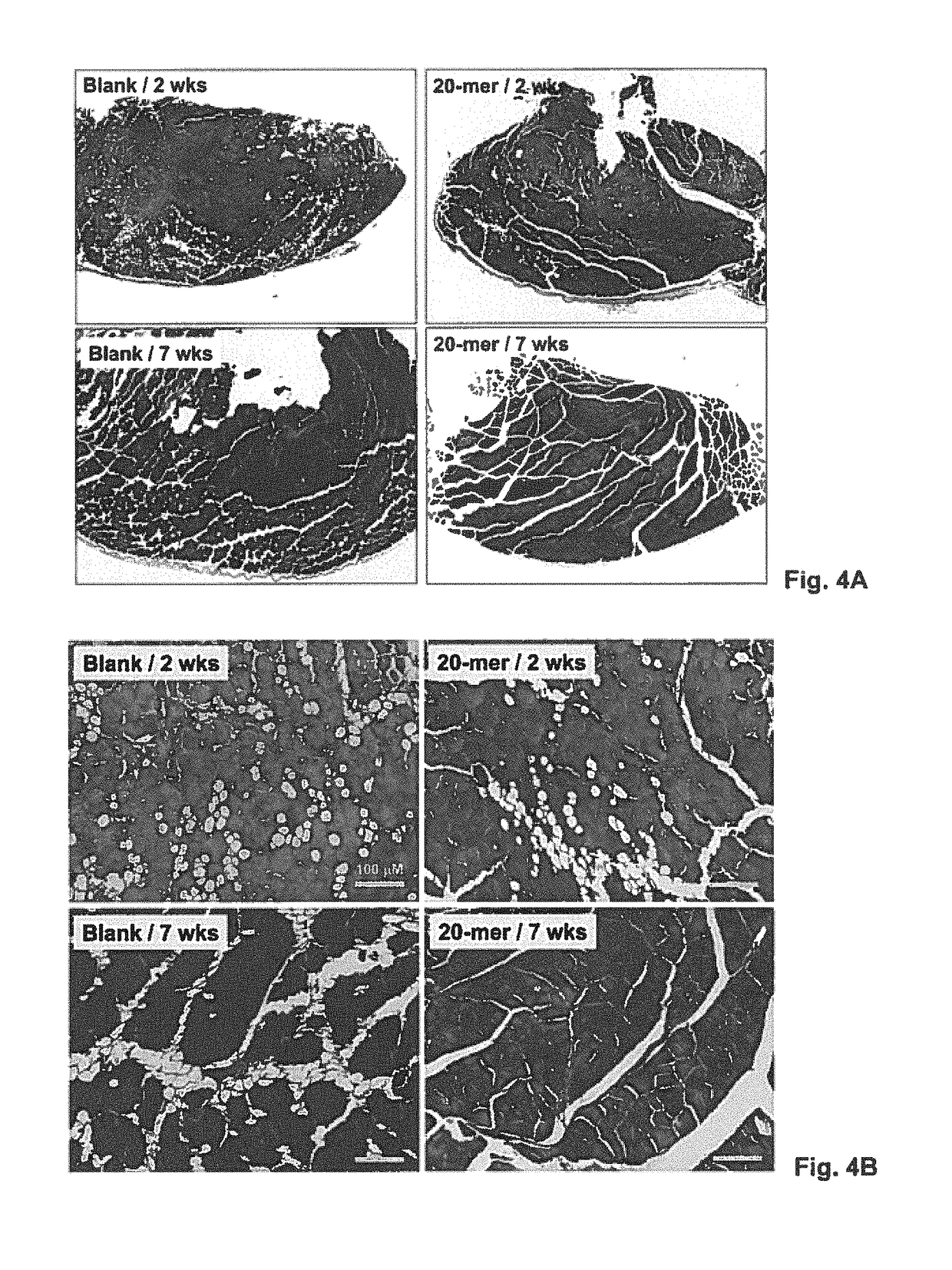Use of PEDF-derived polypeptides for promoting muscle or tendon regeneration or arteriogenesis
a technology of pedf-derived polypeptides and arteriogenesis, which is applied in the direction of endopeptidase, peptide/protein ingredients, peptide sources, etc., can solve the problems of affecting the function of the body, and affecting the regeneration of muscle or tendon tissu
- Summary
- Abstract
- Description
- Claims
- Application Information
AI Technical Summary
Benefits of technology
Problems solved by technology
Method used
Image
Examples
example 1
[0123]Sustained Release of PEDF Peptides from Alginate Gel
[0124]To determine the release kinetics of 29-mer and 20mer, 100 μg of FITC-conjugated PEDF peptide was mixed with 100 μL alginate solution, and then hydrogels were prepared as set forth in the “Materials and Methods” section. Thereafter, 100 mg hydrogel was incubated in 1.5 ml of PBS (pH 7.4) in microcentrifuge tube and placed in an orbital shaking incubator over a 6-day period at 37° C. The tube was centrifuged at each predetermined time point and then 200 μL of supernatant was removed and stored at −80° C. for further analysis, and 200 μL of fresh PBS was added to the tube to replace the supernatant withdrawn. The concentration of FITC-conjugated PEDF peptide present in the collected supernatants was determined using a fluorimeter in 96-well format. A known non-encapsulated FITC-peptide was used to generate a standard curve. Triplicate data were used for analysis.
[0125]The results of the assay, as summarized in FIG. 1, rev...
example 2
[0126]Sustained Release of PEDF Peptides Reduces Ischemic Damages
[0127]Ischemic muscle injury typically leads to necrosis and loss of tissue and function. Hence, ischemic animal model was employed in the present examples to investigate the possibility that the local delivery of the PEDF peptide / alginate gel formulation (herein “the sustained-release formulation”) may promote the recovery of tissue or organ functions in the case of tissue or organ damages. Various conditions associated with ischemic damages, such as, limb perfusion, tissue necrosis, arteriogenesis, and neovessel sprouting, were analyzed in the examples as follows.
[0128]6-week-old female C57BL / 6 wild-type mice were anesthetized by an intraperitoneal injection of a mixture of zoletil (6 mg / kg) and xylazine (3 mg / kg). Hair was removed from the hindquarter with a depilating cream. To establish hindlimb ischemia, unilateral external iliac and femoral arteries and veins were ligated, cut, and excised. After surgery, the mi...
example 2.1
[0129]Sustained Release of PEDF Peptides Enhances Limb Perfusion
[0130]A laser Doppler perfusion imaging (LDPI) analyzer (Moor Instruments, USA) was used to quantify hindlimb blood perfusion before surgery (pre OP), immediately after surgery (post OP), and over time after surgery. To minimize vasoconstriction by anesthetic heat loss, animals were kept on a heating plate at 37° C. for 5 min before measurement. Representative LDPI images illustrating the blood perfusion of ischemic hindlimbs over a time period of 4 weeks were provided in FIG. 2 in which dark blue color represents low blood flow. Blood perfusion is expressed as LDPI index representing the ratio of operated (ischemic) versus non-operated (non-ischemic) limb blood flow of the same mouse, and the results were summarized in FIG. 3 and Table 1 (n 6). Blood flow was displayed as changes in the laser frequency, represented by different color pixels.
[0131]
TABLE 1Ischemic / Non-ischemic Perfusion Ratio (%)TreatmentPre OPPost OP7 d...
PUM
| Property | Measurement | Unit |
|---|---|---|
| time | aaaaa | aaaaa |
| time | aaaaa | aaaaa |
| temperature | aaaaa | aaaaa |
Abstract
Description
Claims
Application Information
 Login to View More
Login to View More - R&D
- Intellectual Property
- Life Sciences
- Materials
- Tech Scout
- Unparalleled Data Quality
- Higher Quality Content
- 60% Fewer Hallucinations
Browse by: Latest US Patents, China's latest patents, Technical Efficacy Thesaurus, Application Domain, Technology Topic, Popular Technical Reports.
© 2025 PatSnap. All rights reserved.Legal|Privacy policy|Modern Slavery Act Transparency Statement|Sitemap|About US| Contact US: help@patsnap.com



